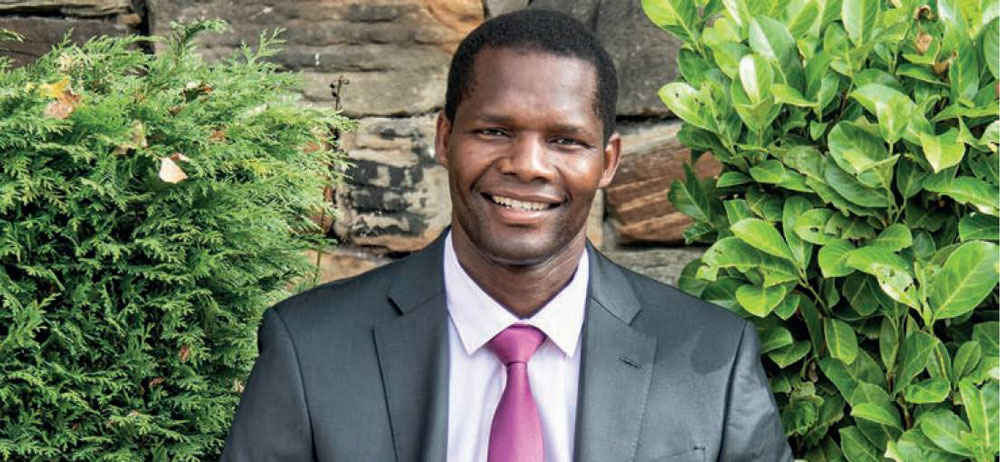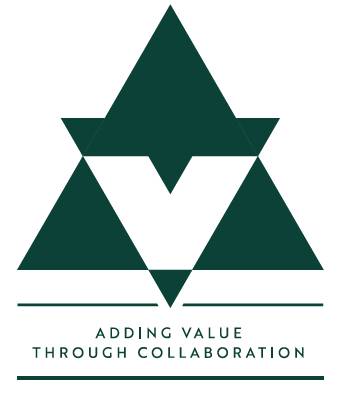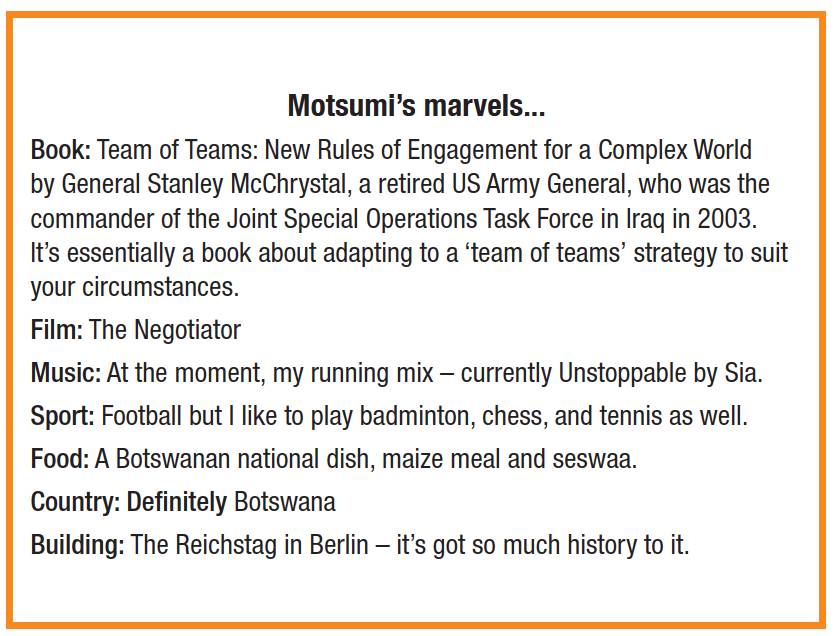The rise of Motsumi
Batsetswe Motsumi MCInstCES MInstLM, Commercial Director, Costain Group, and new CICES President, talks to Danielle Kenneally and Darrell Smart


Meet Batsetswe Motsumi, the new CICES president
A DEVOTED CICES supporter for 20 years, Batsetswe Motsumi, has come a long way from, as his brother would remark, initial ill-thought-out ambition of becoming a teacher to becoming the man he is now – a successful and highly regarded commercial manager with decades of experience. It is something he has achieved through graft and role models, such as former CICES president, Robin Jones.
He is now a role model himself and as the first black president of the institution, he is keen to create opportunities for the institution to engage with organisations, such as the Association for Black and Minority Ethnic Engineers (AFBE-UK ).
It’ll be through collaborations like this which will be the backbone of his presidential year. His chosen theme is ‘adding value through collaboration’ and clearly he is passionate. He wants not only the institution’s members, but their clients and the whole community to benefit. Your new president, Batsetswe Motsumi talks to Civil Engineering Surveyor.
How would you describe yourself in five words?
Focused, curious and achieving results through objective collaboration.
Tell us about your background – what influenced you to choose the surveying profession and how have you progressed to where you are today?
It was completely by accident. All the way through high school I was doing all manner of mathematics – Excel maths, applied maths, everything, in all the separate sciences. Then when I went to college, I chose to do computer science, physics and another two branches of mathematics, as well as chemistry. I wanted to be a teacher.
By the end of my first university year in Botswana, I was focusing purely on mathematics and physics and it was at this point I could, dependent on how good my grades were, apply for external scholarships. My older brother asked me what I would choose. His response to myself becoming a mathematics teacher was ‘no, that’s not what you’re going to do’. It’s funny to think back now, but it made me think that I could choose to do something else.
I chose the UK from a list of four countries based on the fact that it was on a similar latitude, while the course itself, quantity surveying, was my brother’s recommendation. I had no idea what it was, but I liked mathematics and it was related to my father’s career as a builder. I went to the Ministry of Infrastructure in Botswana to learn more about it before I decided it was the course for me.
I had to complete another year in Botswana before I could be sponsored and during this time, I could select which university to go to. For me, the differentiating factor was the colours in the prospectus. Coming from Botswana, a semi-arid country where there’s no green grass apart from during the two-month rainy season, seeing Sheffield Hallam University’s colourful prospectus, and particularly a picture of Norfolk Park, it looked amazing.
It’s fair to say I now know about quantity surveying. I loved it, I realised that the initial modules were quite relatable to science, because they involved materials engineering and mathematics. The course and subsequent work placements also really reinforced my view that I needed to be in this industry.
Who has had the greatest impact on your career?
During my placement with a small company called Edmund Nuttall, I met Robin Jones. He was a really tough but supportive mentor. He sent me to Preston to work on a maintenance contract for Edmund Nuttall and then offered me a permanent job for when I finished university. He is the biggest influence I’ve ever had. I even sent my dissertation on NEC contract partnering and how collaboration could work to him to see what he thought and in his usual manner, he said he thought I could do better.
At the time, the industry was very much uncollaborative – designers, builders, clients, all not working together. I wanted to prove that collaboration could actually deliver value in infrastructure projects. While my course tutor was unsure where I would get the literature, I applied research from elsewhere to show that it is possible – this coupled with the support of people like Robin Jones was a huge help.
What has been the biggest change to commercial management that you’ve seen during your career?
Digitalisation has been the biggest. There’s a constant need for us to adapt our skills for the changing landscape and constantly reinvent our purpose in civil engineering.
I do, however, feel hugely frustrated about the next generation of civil engineering surveyors coming through in the industry. For me, people like Robin Jones, and schemes like the Edmund Nuttall approved development scheme (ADS), pushed you to be the best you can be. Yet now, what I see, is a lot of graduates and new entrants just wanting a job.
The industry is forging ahead and expectations from the clients are increasing, but the skills that are needed to meet that new reality are not there. Wage inflation attracts people into organisations, but standards are declining because individuals are not focused on developing themselves. It’s become more about learning the processes and learning the basics but not actually influencing the process. It’s a huge challenge.
Clients are now approaching the market and it began with Tony Blair’s the Third Way. This is the idea that the best value in public sector procurement can be achieved by increasing efficiencies, through better contract models and better integration within teams and better definitions placed into the scopes. This is the direction clients are moving in, with new technologies, BIM, digitalisation, social value and AI impacting that. They expect to see more for the same price and we, as an industry, need to adapt to that.
Why did you originally join CICES?
I joined the institution in 2003. Robin Jones directed me to the Edmund Nuttall ADS, which was supported by ICES, as it was at the time, and so I became a member. I then became involved with the regions. I was quite inquisitive and curious as I always had this view that it was men in grey suits meeting up in a lodge somewhere and talking about stuff that we’re not supposed to know about, so I wanted to check it out. I got involved with the Yorkshire region although, at the time, there was nothing tangible on the ground.
I remember asking about it at a meeting and ended up being elected to the committee. That was around 2010/11. I became the secretary and eventually the chair. It was one of the best decisions I’ve ever made. I managed to, with the help of Bill Pryke, who had just started at the institution as CEO, build a business plan, engage the local community and revive the regional membership to around 35-40 attendees per meeting. It was incredible to go from practically nothing – I learnt so much.
Adding value through collaboration is the theme of your presidency. Why is this important to you?
I always had this view that [the region activities consisted of] men in grey suits meeting up in a lodge somewhere and talking about stuff that we’re not supposed to know about, so I wanted to check it out.
For me, as well as helping one another, collaboration is about holding ourselves to account. It’s about being critical with the objectives that we’re trying to achieve. I’d like to address the misconceptions around the meaning of collaboration. Now, for the institution, adding value through collaboration is hugely important. My aim for the institution is to improve the digital offering for our members. Our competencies are fantastic, they have substance, but I think it’s possible to make the journey for our members to achieve them a lot easier and more enjoyable.
Our ADS with various organisations are all about adding value through collaboration. They are gaining traction within the industry, which is amazing, so we need continue to support and understand the structure of the in-house training they provide. It’s a two way process, we want people to join our institution and they need us to be able to support them and the next generation of civil engineering surveyors.
Lastly, I want us to continue to impact society and add value in what we’re doing. We’re an educational charity at heart, so we should add as much social value as we can – offer our expertise, our facilities and our voice to our members and our communities.
How vital is social value in infrastructure?
Social value is the new currency – it’s no longer simply about building pretty structures and beautiful buildings, it’s about the positive impact that we leave behind. Social value used to be a unique selling point, but now it’s an actual, tangible deliverable. Major clients now write social value requirements and targets into contracts. Organisations want to deliver a positive legacy for the businesses that work with or use the assets, as well as our employees working on these infrastructure projects by upskilling less economically active groups and developing talent through apprenticeships and work experience. We then see the wider societal benefits of creating or enhancing social amenities.

You’ve spoken about the two arms of geospatial engineering and commercial management needing to be better integrated, is this a natural progression?
Geospatial engineering and commercial management are more closely integrated than they were, but there is still a lot of work to be done. It’s a matter of survival and demonstration of its value to the society it serves. The more we diverge from the common purpose of measuring and adding value through what we measure, the more we dilute the services and the skills that we bring to construction projects.
CICES’ motto is that we measure all that we see. My personal application of this is that as a collective profession, we need to be focused on showing that our commercial and geospatial skills complement one another and can be harnessed to measure the value we bring to infrastructure projects.
On the National Highways A12 project between Costain and Jacobs, for instance, the commercial management team were placed on an LSS software course to learn about land survey, terrain modelling, volume, design and visualisation. However, upon returning to the office I found out the land surveyor on the project, who I thought just did the setting out, was an expert at it. So, there can be synergy between the geospatial and commercial practices.
If you could have one magic fix for the industry, what would it be?
My magic fix would be collaboration within the various disciplines and specialisms within the industry to take full advantage of the value that each brings to the successful delivery of projects. It’s such a simple thing but it’s so hard to implement. There is a lot of misconception about what collaboration actually is. In this industry, it’s not just about being inquisitive, it’s about using that knowledge for the benefit of yourself, the client and your colleagues. It’s about constantly improving the processes in place and, in turn, consistently reviewing whether there are changes and how those changes need to be integrated into the project and shared with colleagues as you continue to collaborate.
A quantity surveyor’s job, for example, is all about making sure that value is being delivered for the client, so the value of each person is vital to a successful project delivery. Understanding what a quantity surveyor can do, what an engineer can do, what a land surveyor can do, and how each can contribute to the success of the project is critical because that knowledge can show the overlap and that can make life a lot easier for the next person.
The CICES BIM White Paper on ‘Transforming the civil engineering surveyor’ has laid out a case for this integration. The focus during my presidential year is to make sure that the value that CICES sees in its members is appreciated by the industry and is enjoyed by the society at large.
What has been the proudest moment of your career?
My proudest moment has been reviving the Yorkshire region of CICES. It was a real eye-opener; I knew nothing about how the regions operated, yet I learnt how to manage and engage our members.
What has been the most fun project you’ve worked on?
My magic fix would be collaboration within the various disciplines and specialisms within the industry to take full advantage of the value that each brings to the successful delivery of projects. It’s such a simple thing but it’s so hard to implement.
Definitely Castleford Lock footbridge in Wakefield. It was part of the Castleford community-led regeneration scheme which was supported by the Channel 4 Grand Designs team in collaboration with Wakefield, a former mining town in Yorkshire.
The project I was involved with, as part of Costain, was the construction of a 150m S-shaped footbridge across the River Aire. Worth about £3m, every single piece of the Brazilian timber had its own individual radius – it was a jigsaw. We had to make sure we had all the materials that we needed and that it all fitted together – and to do all of that without breaking any one of them. It was my favourite project and the Grand Designs presenter Kevin MacLeod loved it.
What has been the hardest project you worked on?
The hardest project I’ve worked on was the A14, a trunk road stretching almost 130 miles from Rugby in the West Midlands to Felixstowe on the Suffolk coast. It was a mega project split into three individual packages of works. The biggest challenge was to get four major contractors; Costain, Balfour Beatty, Skanska and Carillion to work together collaboratively to deliver the scheme. We had to draft a cooperation agreement to bring it all together and this resulted in a new contractual framework and produced a project-wide joint venture just for that project, to make the collaboration work. It achieved the results.
If you could offer a piece of advice to someone starting out in their career what would it be?
My advice would be make yourself the best person you can be for the industry and not simply for the company you work for. Developing yourself this way makes you more marketable and valuable for the industry as a whole, rather than relying on the unique knowledge gained from working for a single organisation.
When you retire, what would you like to look back on as your greatest achievement?
When I do retire, I’d like to see the challenges that I’ve had in the industry around lack of communication, common understanding of what the agreements are and how to work together, to be overcome. If people understand what collaboration is and they can define what they expect to get and what they want to achieve and how they’re going to work together on a daily or weekly basis to the end of the project and they all go home instead of going to court, then that’ll be my greatest achievement.
What do you enjoy away from work?
I’ve taken up cycling, running and a bit of football – I’d even consider myself to be a football coach for my seven-year-old son. I spend time playing with him on weekends and with my family. This morning I completed a 9km run. I also enjoy spending as much time as I can at my organic cattle, goat and sheep family farm that I have in Botswana.
Batsetswe Motsumi MCInstCES MInstLM, Commercial Director, Costain Group, and new CICES President, talks to Danielle Kenneally and Darrell Smart
www.linkedin.com/in/batsetswe-motsumi-mcinstces-minstlm-16896117/